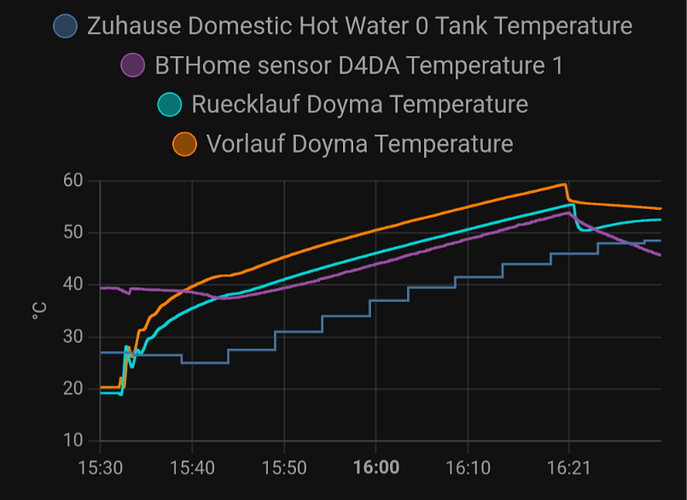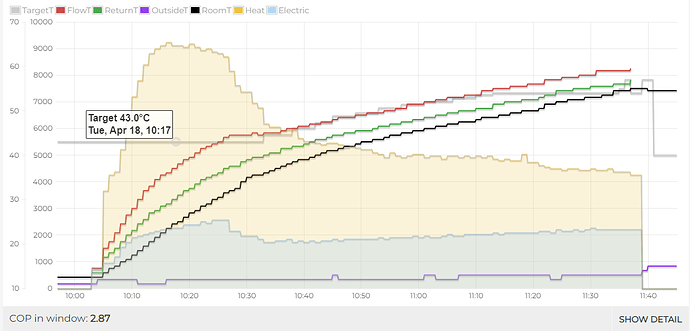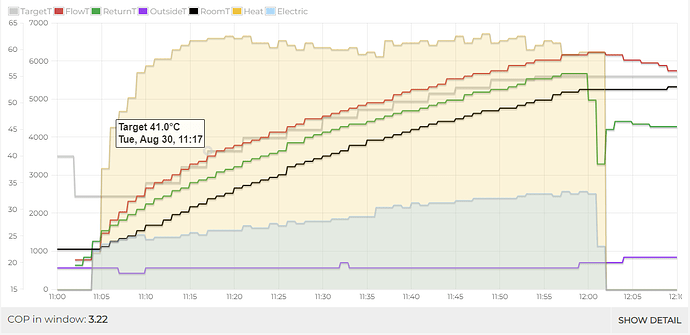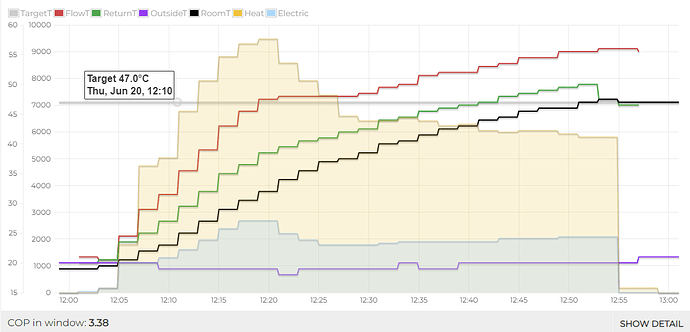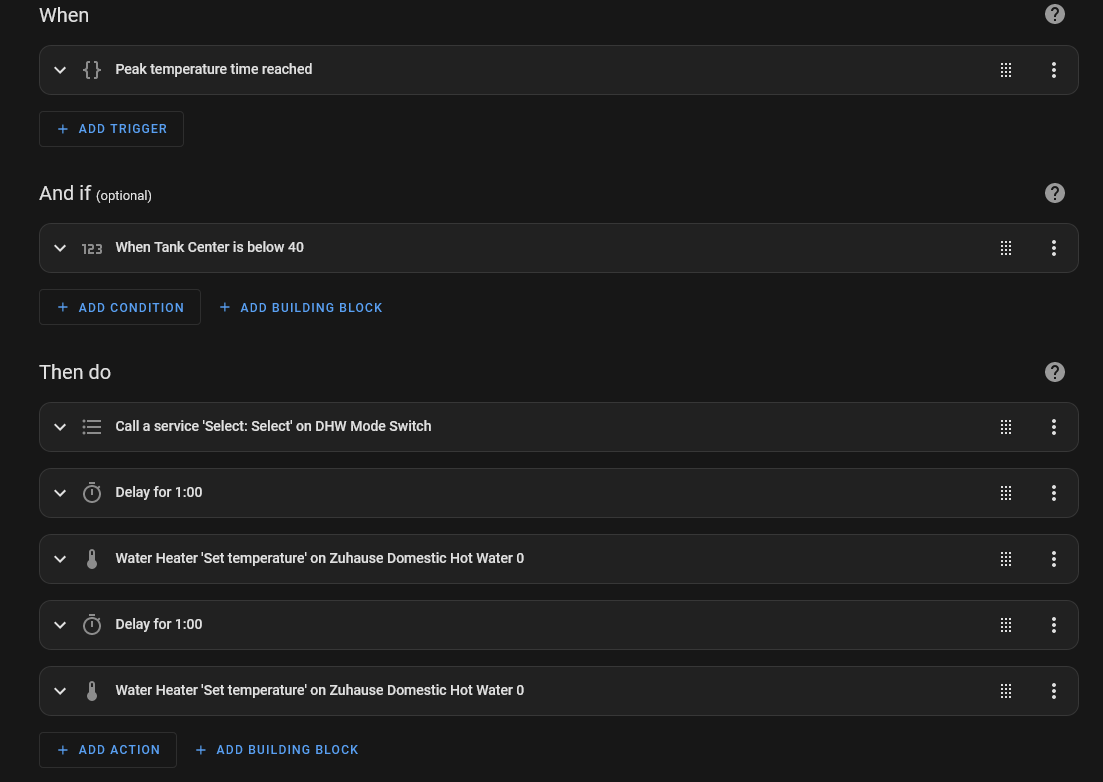From my experience in the last weeks I can say that I need the DHW run every day to make sure that I have sufficiently hot water. Maybe I could optimize this further but to be honest the expected gains would be minimal. So what I’m doing now is run th DHW cycle at the forecast hottest time of day or latest 5 p.m. For this I have defined these Home Assistant template sensors that get the hourly forecast for the day every day at 6 in the morning and store the expected peak temperature & corresponding time.
template:
- trigger:
- platform: time_pattern
hours: "06"
minutes: "00"
seconds: "00"
action:
- service: weather.get_forecasts
data:
type: hourly
target:
entity_id: weather.berlin_buch
response_variable: hourly
sensor:
- name: DWD Forecast Hourly
unique_id: dwd_weather_forecast_hourly
state: "{{ states('weather.berlin_buch') }}"
attributes:
forecast: "{{ hourly['weather.berlin_buch'].forecast }}"
- name: "High temperature today"
unique_id: High_temperature_today
device_class: temperature
unit_of_measurement: °C
state: >
{% set midnight = (today_at() + timedelta(days=1)).isoformat() %}
{{ state_attr('sensor.dwd_forecast_hourly', 'forecast')| selectattr('datetime', 'lt', midnight) | map(attribute='temperature') | list | max }}
- name: "High temperature time today"
unique_id: High_temperature_time_today
device_class: timestamp
state: >
{% set midnight = (today_at() + timedelta(days=1)).isoformat() %}
{% set forecast = state_attr('sensor.dwd_forecast_hourly', 'forecast') %}
{% set max_temp = forecast | selectattr('datetime', 'lt', midnight) | map(attribute='temperature') | max %}
{% set max_temp_time = forecast | selectattr('temperature', 'eq', max_temp) | map(attribute='datetime') | first %}
{{ max_temp_time }}
Then I have this automation:
It triggers when the peak time is reached or at the latest at 5 pm so I have guaranteed hot water in the evening. The trigger template i this:
{% set peak_time = states('sensor.high_temperature_time_today') %}
{% set latest_time = today_at().replace(hour=17, minute=0, second=0, microsecond=0).isoformat() %}
{% if peak_time < latest_time %}
{{ now().isoformat() >= peak_time }}
{% else %}
{{ now().isoformat() >= latest_time }}
{% endif %}
The if condition checks whether the tank temperature is below 40°C. This will typically be the case, except for rare cases with a Legionella cycle in the previous day & very little water use.
Then the DHW mode is switched to “Eco” to be safe; this is done via a dropdown selector that is provided via the Node RED integration. Node RED sends the appropriate MQTT command to ebusd. I’m waiting a minute to make sure the change is applied.
Following this, the target temperature is briefly set to 70°C to triger the run; this is done via the MyVaillant integration, though I want to transition this to using ebus too to be cloud-independent. After one minute, the temperatue is set to my default of 47°C again, which is the temperature that terminates the DHW run.
I have implemented this strategy manually over the last couple of weeks and am reaching COPs between 3.5-4 at outside temperatures between 20-30°C.
Any unexpected hot water use that drops my tank temperature below 27°C at any time will trigger a DHW run based on the normal Vaillant built-in mechanism.
